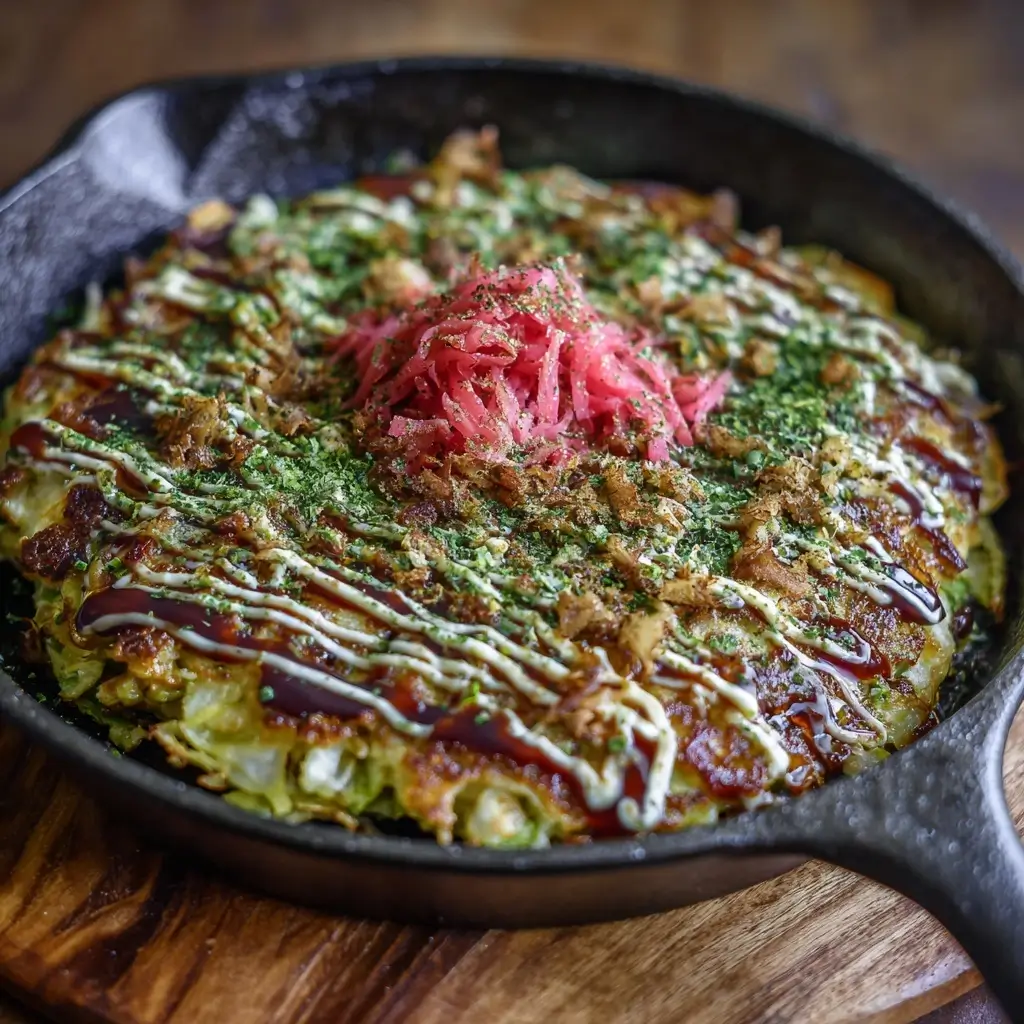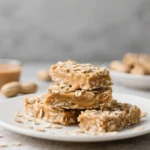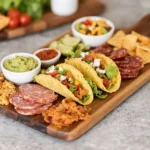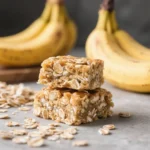Okonomiyaki (Japanese Cabbage Pancake): A Savory Delight from the Heart of Japan
Introduction
Okonomiyaki, often referred to as a “Japanese pancake” or “savory pancake,” is a beloved comfort food that originated in Japan and has gained international acclaim for its rich flavors, satisfying texture, and customizable nature. The name “okonomiyaki” comes from the Japanese words okonomi, meaning “as you like it,” and yaki, meaning “grilled” or “cooked.” True to its name, this dish allows endless creativity—each version reflecting the preferences of the cook or region.
Unlike Western-style pancakes, okonomiyaki is not sweet but savory, built around a base of shredded cabbage, eggs, and flour, then grilled to perfection on a hot griddle. It’s typically topped with a symphony of bold condiments: tangy okonomiyaki sauce, creamy mayonnaise, bonito flakes, seaweed powder, and pickled ginger. Whether enjoyed at a bustling street food stall in Osaka or made at home with family, okonomiyaki brings people together through its warmth, aroma, and communal cooking experience.
The History
The roots of okonomiyaki trace back to the early 20th century, evolving from a simple dish called funoyaki, a wheat-based pancake popular in pre-war Japan. As ingredients became more accessible after World War II, cooks began adding cabbage and other vegetables to stretch their meals, giving rise to what we now know as okonomiyaki.
Two main regional styles dominate the okonomiyaki scene: Osaka-style (also known as Kansai-style) and Hiroshima-style. In Osaka, all ingredients are mixed together into a batter and cooked into a thick, fluffy pancake. This version became immensely popular in the postwar era and is now the most widely recognized form of okonomiyaki worldwide.
In contrast, Hiroshima-style okonomiyaki is constructed in layers: cabbage is piled high first, followed by thin layers of batter, protein (usually pork or yakisoba noodles), and egg. This method results in a taller, crispier, and more complex dish. The Hiroshima variant reflects the city’s resourcefulness and culinary innovation during reconstruction periods.
Today, okonomiyaki is more than just food—it’s a cultural icon. Dedicated restaurants, known as okonomiyaki-ya, serve these pancakes tableside on hot iron griddles, allowing diners to customize their creations. Festivals celebrating okonomiyaki are held annually, especially in Osaka and Hiroshima, where chefs compete for the title of best pancake maker. Its evolution from wartime sustenance to gourmet staple showcases Japan’s ability to transform simplicity into artistry.
Ingredients Breakdown
The beauty of okonomiyaki lies in its balance of textures and flavors, achieved through a carefully selected combination of ingredients. Below is a detailed breakdown of each component:
Base Ingredients:
- Cabbage: The star of the dish. Fresh green cabbage is finely shredded, providing bulk, moisture, and a subtle sweetness. When cooked, it softens into a tender yet slightly crunchy texture that holds the pancake together.
- Flour: All-purpose flour acts as the binder. It creates a light, pancake-like structure when combined with liquid. Some variations use dashi-infused water to enhance umami.
- Eggs: Eggs add richness, help bind the mixture, and contribute to a golden crust when grilled.
- Water or Dashi: Using dashi (Japanese soup stock) instead of plain water deepens the savory flavor profile significantly. Homemade or instant dashi works well.
Protein Additions (Optional but Common):
- Pork Belly Slices: Thinly sliced raw pork belly is layered into the pancake and crisps up beautifully during cooking.
- Squid or Octopus: Popular in coastal regions, seafood adds a briny depth.
- Bacon or Ham: Western-inspired additions that bring smoky saltiness.
- Tofu: For a vegetarian option, crumbled or cubed firm tofu provides plant-based protein.
Vegetable Enhancements:
- Green Onions: Chopped scallions add freshness and mild onion flavor.
- Carrots and Bean Sprouts: Grated carrots and bean sprouts increase nutritional value and crunch.
- Nori (Seaweed Flakes): Adds oceanic umami and visual appeal.
- Beni Shoga (Pickled Red Ginger): Offers a bright pink color and sharp, vinegary tang that cuts through richness.
Toppings and Sauces:
- Okonomiyaki Sauce: A thick, Worcestershire-style sauce with notes of fruit, soy, and vinegar. Brands like Bulldog are iconic.
- Japanese Mayonnaise: Kewpie mayo is richer, creamier, and slightly sweeter than Western mayos, thanks to egg yolks and MSG.
- Katsuobushi (Bonito Flakes): Thin shavings of dried, fermented tuna that dance in the heat due to their lightweight nature—a mesmerizing culinary spectacle.
- Aonori (Dried Green Seaweed): Sprinkled generously on top for an earthy, oceanic finish.
Step-by-Step Recipe
Here’s how to make authentic Osaka-style okonomiyaki at home, complete with tips for achieving restaurant-quality results.
Ingredients (Makes 2 large pancakes)
- 4 cups finely shredded green cabbage (about ½ medium head)
- 1 cup all-purpose flour
- 2 large eggs (plus 1 extra for topping)
- ¾ cup dashi or water
- 2 green onions, thinly sliced
- ½ cup tenkasu (crispy tempura bits) – optional but recommended
- ¼ cup beni shoga (pickled red ginger) – optional
- 4–6 slices pork belly (or substitute with bacon, squid, or omit for veggie version)
- Vegetable oil (for greasing griddle or pan)
- Okonomiyaki sauce (store-bought or homemade)
- Japanese mayonnaise (preferably Kewpie)
- Dried bonito flakes (katsuobushi)
- Aonori (dried seaweed powder)
Directions
- Prepare the Batter: In a large mixing bowl, combine the flour and dashi (or water). Whisk until smooth, ensuring no lumps remain. The consistency should resemble thin pancake batter.
- Add Vegetables: Stir in the shredded cabbage, green onions, tenkasu, and beni shoga. Mix thoroughly so the cabbage is evenly coated with batter. Let sit for 5–10 minutes to allow the cabbage to absorb some moisture, which helps bind the mixture.
- Preheat Cooking Surface: Heat a flat griddle, cast-iron skillet, or non-stick frying pan over medium-high heat. Lightly grease with vegetable oil using a paper towel or brush.
- Form the Pancakes: Divide the mixture into two portions. Pour one portion onto the hot surface and shape it into a round patty about ¾ inch thick and 7–8 inches wide using a spatula. Press down gently to compact.
- Add Protein: Lay 2–3 slices of pork belly (or your choice of protein) evenly over the top of each pancake. Allow them to sizzle for about 1 minute.
- Cook the First Side: Cook for 4–5 minutes, or until the edges begin to brown and look crisp. Lift the edge carefully to check for a golden-brown crust.
- Flip Carefully: Place a large spatula under the pancake, support it with another if needed, and flip in one confident motion. This takes practice—don’t worry if it breaks slightly; it can be reshaped.
- Cook the Second Side: Lower the heat slightly and cook for another 4–5 minutes until the second side is golden and the center is cooked through. You can insert a toothpick to test doneness—it should come out clean.
- Add Egg Topper: Crack one egg per pancake onto a separate part of the griddle. Scramble lightly and spread into a thin circle. Once partially set, slide it over the top of the flipped okonomiyaki.
- Final Browning: Press gently with the spatula and cook for another 1–2 minutes until the egg is fully adhered and slightly crispy at the edges.
- Transfer to Plate: Slide the finished okonomiyaki onto a serving plate.
- Apply Toppings: Generously drizzle with okonomiyaki sauce in a zigzag pattern. Repeat with Japanese mayonnaise. Sprinkle liberally with aonori and pile on katsuobushi. Serve immediately while hot.
Tips
- Shred Cabbage Finely: The finer the cabbage, the better it binds with the batter and cooks evenly.
- Don’t Skip the Tenkasu: These crispy tempura crumbs add essential texture contrast and absorb excess moisture.
- Use a Flat Griddle: A teppan (iron griddle) gives the best results, but any flat, heavy pan works. Avoid curved pans like woks.
- Control Moisture: If your cabbage releases too much water, squeeze it gently in a colander before mixing.
- Oil Liberally (But Smartly): Grease the pan well before placing the batter, but avoid pooling oil. Re-grease lightly before flipping.
- Flip with Confidence: Hesitation leads to breakage. Use two sturdy spatulas if necessary.
- Serve Immediately: Okonomiyaki is best enjoyed fresh off the griddle while the exterior is crisp and the interior is warm and fluffy.
- Let It Rest: Allowing the batter-mixed cabbage to rest for 10 minutes improves cohesion and flavor absorption.
Variations and Customizations
One of the greatest joys of okonomiyaki is its adaptability. Here are several popular variations:
Otafuku Style (Osaka Classic)
The standard mix: cabbage, pork, shrimp, squid, green onion, tenkasu, and beni shoga. Topped with all traditional sauces and garnishes.
Morioka Reimen Style (Iwate Prefecture)
Features cold noodles served alongside, blending Korean influences with Japanese technique.
Hiroshima-Style Okonomiyaki
- Cook a thin crepe layer first.
- Add a mountain of cabbage.
- Add bean sprouts, green onions, and protein.
- Top with fried yakisoba noodles and a fried egg.
- Flip and grill until cohesive. Requires more time but offers incredible texture contrast.
Vegetarian/Vegan Okonomiyaki
Omit meat and seafood. Use tofu, mushrooms (especially shiitake), zucchini, and carrots. Replace eggs with flaxseed meal (1 tbsp ground flax + 3 tbsp water = 1 egg), and use vegan mayo and fish-free toppings (use smoked paprika or mushroom powder instead of bonito).
Kimchi Okonomiyaki
Add chopped kimchi for a spicy, fermented kick. Pairs exceptionally well with mozzarella or melted cheese (a fusion twist).
Cheese-Stuffed Okonomiyaki
Bury a cube of mozzarella or processed cheese in the center before flipping. The gooey surprise inside elevates comfort levels dramatically.
Mini Okonomiyaki (Hiroshima Takoyaki Fusion)
Make bite-sized versions using an okonomiyaki pan or muffin tin. Perfect for parties or bento boxes.
Western-Inspired Twists
Incorporate ingredients like corn, bell peppers, cheddar cheese, or even hot dogs for a playful fusion take.
Health Considerations and Nutritional Value
While undeniably delicious, okonomiyaki can vary widely in nutritional content depending on ingredients and portion size. Here’s a general analysis per serving (one medium pancake without excessive toppings):
Nutritional Breakdown (Approximate)
- Calories: 450–600 kcal
- Protein: 15–20g (higher with added meat/seafood)
- Fat: 20–30g (mainly from oil, mayo, and pork)
- Carbohydrates: 45–55g (from flour, cabbage, and sauces)
- Fiber: 4–6g (thanks to cabbage and vegetables)
- Sodium: 800–1,200mg (primarily from sauce, soy, and processed meats)
Health Tips
- Reduce Sodium: Use low-sodium soy sauce in homemade batter, choose reduced-salt okonomiyaki sauce, or dilute store-bought sauce with water or mirin.
- Lower Fat: Grill with minimal oil, use lean proteins like chicken breast or shrimp, and reduce mayo or substitute with Greek yogurt.
- Boost Nutrition: Increase vegetable content—add spinach, mushrooms, grated daikon, or kale. Use whole wheat or buckwheat flour for added fiber.
- Portion Control: Make smaller pancakes or share one between two people, especially when dining out where servings tend to be large.
- Balance Your Meal: Serve with miso soup, edamame, or a simple cucumber salad to round out the meal nutritionally.
Dietary Notes
- Gluten-Free Option: Substitute all-purpose flour with rice flour or gluten-free blend. Ensure dashi and sauces are gluten-free.
- Keto-Friendly? Traditional okonomiyaki is high in carbs, but a modified version using almond flour, egg whites, and extra cabbage can work in moderation.
- Allergens: Contains eggs, wheat, soy, and potentially shellfish (in dashi or toppings). Always check labels if serving those with allergies.
FAQ
What does okonomiyaki mean?
The word “okonomiyaki” translates to “grilled as you like it,” emphasizing the dish’s customizable nature.
Is okonomiyaki the same as a Japanese pancake?
It’s often called a Japanese pancake, but unlike sweet American pancakes, okonomiyaki is savory and cabbage-based.
Can I make okonomiyaki without a griddle?
Absolutely! A heavy non-stick frying pan or cast-iron skillet works perfectly on a stovetop.
Where can I buy okonomiyaki sauce?
Available in Asian grocery stores, Japanese markets, or online. Look for brands like Bulldog or Wanja. You can also make it at home using ketchup, Worcestershire sauce, soy sauce, sugar, and mirin.
Can I freeze okonomiyaki?
Yes. Cook fully, cool completely, wrap individually, and freeze for up to 2 months. Reheat in a skillet or oven until heated through. Texture may soften slightly.
Why do the bonito flakes move?
The movement is caused by steam rising from the hot pancake, making the ultra-thin, lightweight flakes flutter. It’s a natural effect and part of the fun!
Is okonomiyaki healthy?
It can be part of a balanced diet when made with lean ingredients, less oil, and moderate toppings. Loaded versions are more indulgent.
Can I make it vegan?
Yes, with substitutions: use flax eggs, plant-based proteins, vegan mayo, and skip bonito flakes (replace with mushroom powder or nori).
What’s the difference between Osaka and Hiroshima style?
Osaka-style mixes everything together; Hiroshima-style layers ingredients with yakisoba noodles and cooks them sequentially, resulting in a taller, noodle-rich pancake.
Can I prepare the batter ahead of time?
You can prep the batter (without cabbage) and shred vegetables in advance, but mix just before cooking to prevent sogginess.
Summary
Okonomiyaki is a flavorful, customizable Japanese savory pancake made with cabbage, eggs, and a variety of toppings, grilled to perfection and adorned with umami-rich sauces and dancing bonito flakes. Whether you prefer the classic Osaka mix or a creative fusion twist, this hearty dish brings joy to every bite.










